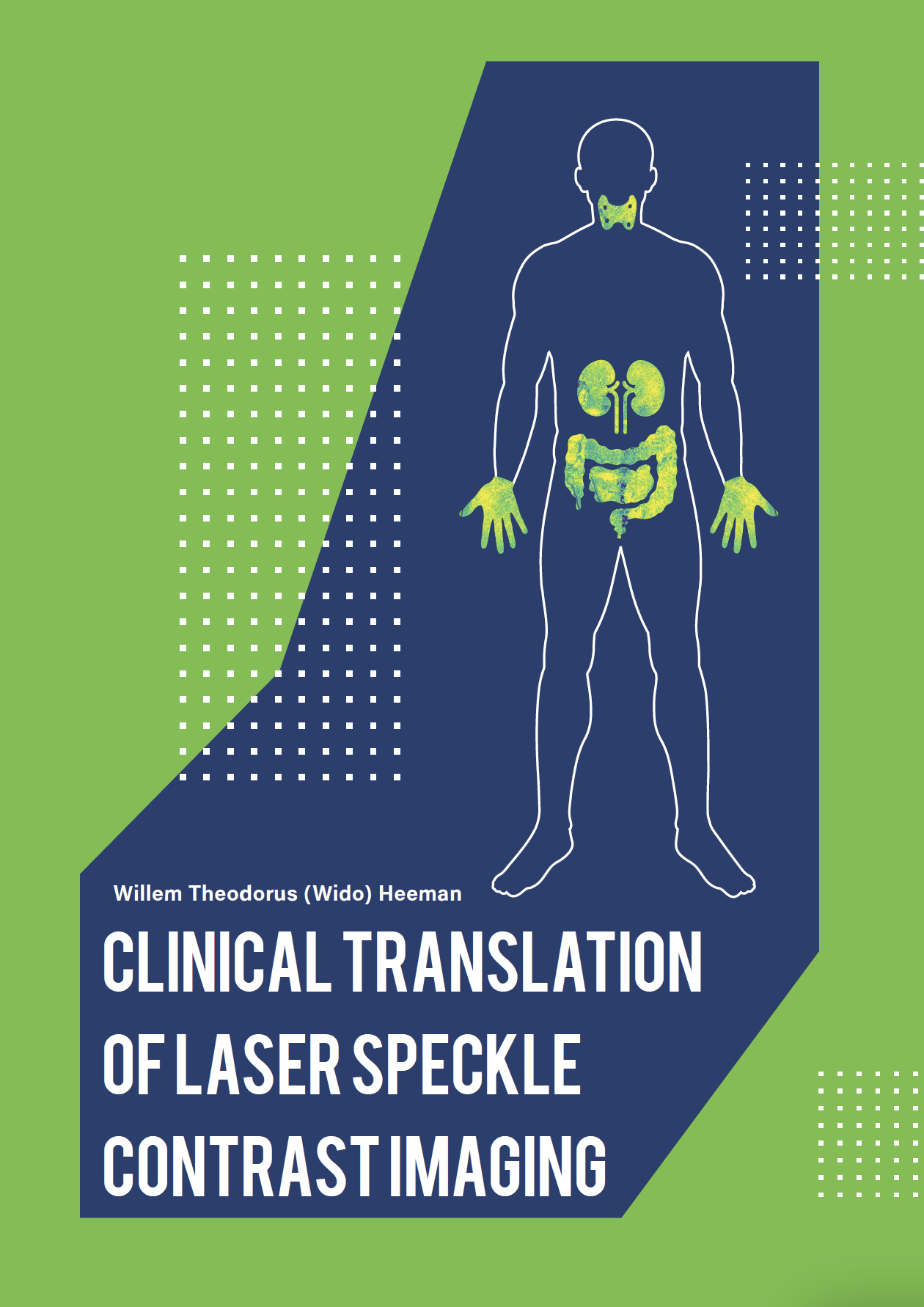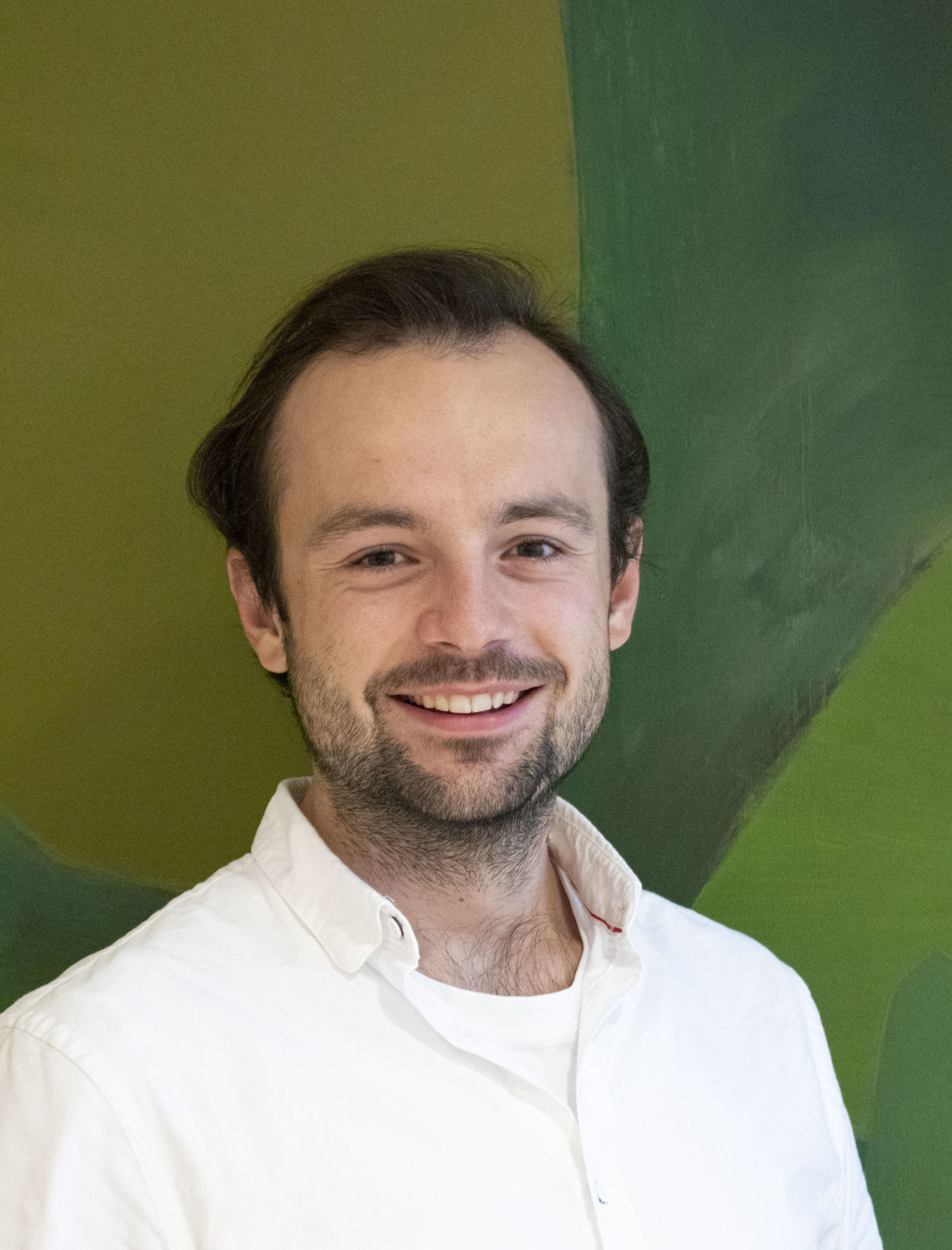Upcoming: PhD defense Wido Heeman

Wido Heeman will defend his PhD on the 16th of December 2022 at 14:30, at the Beursgebouw of the University of Groningen in Leeuwarden. The title of his thesis is: “Clinical translation of laser speckle contrast imaging”. The complete thesis can be found here and the online defense can be followed via this link.
Abstract
Humankind is moving forward in an astonishing pace in every scientific specialty. Interestingly enough, the current standard of care for perfusion assessment has remained unchanged since the beginning of medicine. The desire to ‘see’ intraoperative perfusion has never been more urgent with the growing understanding that adequate perfusion is an essential aspect of organ function or for instance wound healing and therefore plays a leading role in preventing mortality and morbidity throughout a multitude of disease states. Current perfusion assessment is performed by the surgeon’s naked eye and generally based on subjective clinical indicators of tissue viability (e.g., tissue colour, bleeding of the resected edges or pulsatile motion of tissue). The sum of these, sometimes ill-defined visual clues, is the surgeon’s specific fingerspitzengefühl that takes a long time to develop and is lost at the end of his or her career, notwithstanding its reliability, accuracy and reproducibility. The high degree of inherent subjectivity of the surgeon’s assessment of perfusion fuels the need for an objective imaging method capable of real-time imaging of perfusion in organs and tissues. Perfusion imaging is of interest in many medical disciplines as the state of perfusion is indicative of the vitality of the tissue of interest. Disturbance of the normal perfusion state is an indication of imminent illness, immediate or threating loss of (organ) function or even the initiation of chronic disease. For example, perfusion imaging could be used to monitor the state of inflamed joints in patients with rheumatoid arthritis, foot ulcers in patients with diabetes and the state of the nailfold capillaries in patients with Raynaud’s syndrome. In the surgical setting, perfusion imaging is used intraoperatively to monitor the consequence of the inevitable vascular damage and the consequent failure of tissue healing, of great importance during and after surgical procedures. It is important to realise that assessment of perfusion by means of imaging does not have any therapeutic effect by itself, yet, it can be regarded as a so-called ‘red-flag’ diagnostic tool. It is the surgeons’ job to i) perform a standardized imaging, ii) to correctly interpret the images, and iii) act upon it in a sensible way, always weighing the consequences of either acting or reticent observation. Only when all of the three pillars previously mentioned are in place, a well-weighted and imaging-data based change in clinical outcome may be anticipated. Therefore, perfusion assessment itself functions as an additional source of important real-time information that the surgeon can tap into during clinical decision making at the moment it counts the most. Providing surgeons with sophisticated tools that allow them to ‘see’ perfusion in an objective manner is the essence of the added clinical value of perfusion imaging. Acting on the additional visual feedback could result in for instance the relocation of a colonic anastomosis to well perfused colon tissue thereby preventing a possible anastomotic leakage. Or simply, that a transplanted kidney is repositioned in the recipient to remedy a twisted or obstructed artery or arterial anastomosis . Today, few of these (potential) use cases have been established as standard-of-care for 187 intraoperative perfusion imaging.
This thesis describes the clinical translation of laparoscopic LSCI. The basic and more fundamental pre-clinical studies provide evidence that LSCI can measure the slightest of perfusion differences in real-time in both experimental and real-life studies. When this technology is used in a standardized and reproducible imaging procedure, it can yield reliable perfusion measurements supporting day-to-day clinical decision-making. The clinical value in minimally invasive surgery has yet to be determined using intervention studies, however, the observational studies show great potential. In short: ‘LCSI is on the Move!’
